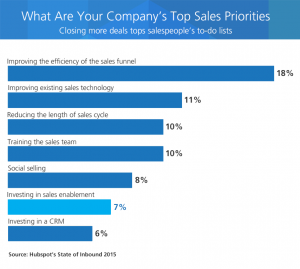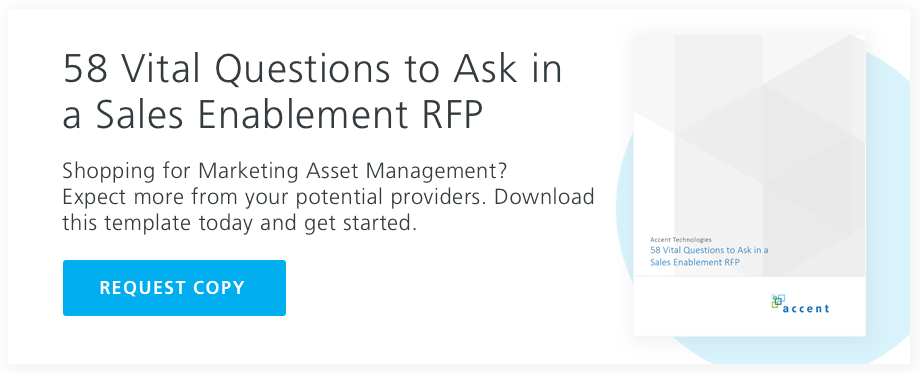sales
Achieving Sales Priorities through Sales Enablement
Hubspot’s State of Inbound 2015 report is full of great insight and metrics about the current state of sales and marketing strategies. While perusing it, I noticed something interesting. In the report, there’s a graphic titled “What are your company’s top sales priorities?” Here are the top 5 priorities on the list:
- Improving the efficiency of the sales funnel
- Improving existing sales technology
- Reducing the length of sales cycle
- Training the sales team
- Social selling
Notice anything missing? Coming in at number 6 is sales enablement, with just 7% of sales people stating it’s a top priority.

While higher than the 5% sales enablement received in 2014, the lack of prioritization for sales enablement is alarming to say the least. Companies are not prioritizing sales enablement—the thing specifically designed to help achieve all of those priorities that made the top of the list.
- Trying to improve the efficiency of the sales funnel? You should try sales enablement.
- Trying to improve your existing sales technologies? You’d be better served by shifting to sales enablement technologies, promise.
- Trying to reduce the length of the sales cycle? Sales enablement can do that.
- Trying to train your sales team? That’s part of sales enablement.
- Trying to implement social selling? It ties into sales enablement too.
So the question is why? Why would companies invest so little in a solution that would make it so simple to achieve all of their sales goals? My guess is that it comes down to one of three main factors:
3 Main Factors Keeping Companies from Sales Enablement Investment
They don’t realize there’s a better way
While becoming more common, the term “sales enablement” is still new enough to B2B sales that companies may genuinely not know about the technology, services and solutions that can improve their sales processes and increase win rates (If that describes your company, here’s a good starting point).
They don’t have a clear understanding of sales enablement
It’s quite likely that the survey respondents were investing in sales enablement, but it wasn’t actually called sales enablement. After all, any action or process implemented to reduce the length of the sales cycle certainly falls under the sales enablement umbrella. Is it efficient to implement multiple point solutions to address individual priorities like that? Not particularly, especially when a full sales enablement solution can address everything in one go, but it is a step in the right direction.
They have been burned by past investments
Sales enablement is a saturated market, each vendor promises the world and the answer to all your problems. Companies new to the sales enablement can easily get excited by the promise of immediate ROI. But take your time and do your due diligence. There are really amazing solutions out there that can deliver on their promise, but it takes vetting to sift through the imposters who’ve learned the lingo. If you need help knowing the right questions to ask to get to the truth, check out our guide and template 58 Vital Questions to ask in a Sales Enablement RFP.
So where does that leave us? Hopefully by increasing awareness of what sales enablement is and how it can improve companies’ sales execution, Hubspot’s report next year will tell a very different story about sales enablement investments. If you’d like to learn more about sales enablement, give us a call or schedule a demo today. We’d love to chat.












